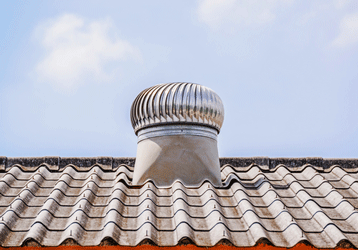
If your attic seems to get as hot as your car’s interior on a warm, sunny day, you probably need better attic ventilation. Cars and attics can reach 140 degrees F and higher, and all that heat doesn’t do either one of them any good. Just as you can crack open a car window to prevent such excessive heat in your car, you can use ventilation in the attic to reduce the heat gain.
Adequate ventilation prevents these problems in your home:
- Damage to the roof — including the roof deck, sheathing and shingles — caused by excessive moisture in the attic and high temperatures. The roof deck can warp or ripple, which causes structural problems and damages the roofing materials.
- Heat infiltration into your home from the attic. Even with adequate insulation, some heat will seep into your ceilings and down into the rooms when temperatures climb. Your air conditioner will run more to cool the air off, driving up energy costs.
- Mold can grow in the attic when enough humidity is present. Once it takes hold, it can spread throughout the rest of your home.
Increasing Ventilation
The first step in learning if your attic needs ventilation is to calculate how large it is and how much is already there. The FHA recommends one square foot of attic ventilation for each 300 square feet of floor space. When inspecting the attic, look for soffit, gable and ridge vents. As you look around, remove anything that blocks them.
If you need more, consider:
- An attic fan to pull stale air from the attic is one option. You’ll need enough cross-ventilation in the attic to replace the outgoing air for this to be an energy efficient solution.
- An attic tent is a great way to prevent the heat from escaping from the attic and getting into your home if you have an attic pull down ladder that is located inside your home.
Adequate attic ventilation protects your home’s structure from the top down and increases your comfort without adding to your energy bills. To learn more, contact Jackson & Sons, providing trusted HVAC services for eastern North Carolina homeowners.
Our goal is to help educate our customers in Eastern North Carolina (including Wayne, Johnston, Greene, Lenoir, Pitt and Duplin Counties) about energy and home comfort issues (specific to HVAC systems).
Credit/Copyright Attribution: “Name”